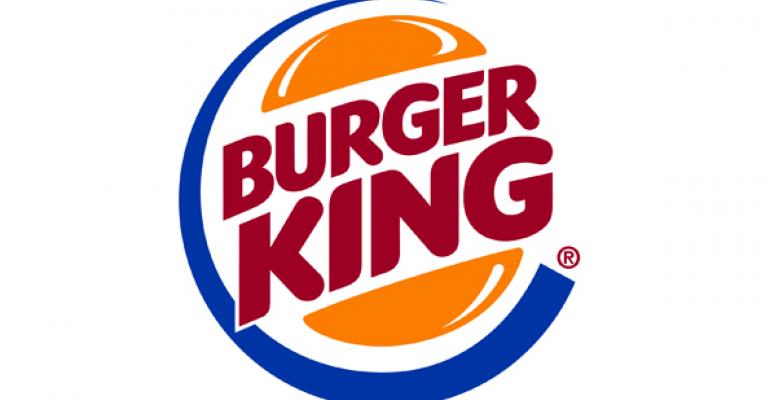Officials for Miami-based Burger King Worldwide credited the company’s global refranchising initiative with its near doubling of net income in fiscal 2013 and told investors and analysts that the nearly fully franchised model would let the chain grow profitability further in 2014.
Alex Macedo, president of Burger King’s North American system, conceded that the chain’s main competitors have significant amounts of company-owned restaurants, while Burger King has only 50 corporate stores left in its hometown market. But the nearly wholly franchised model would create the conditions Burger King needs to achieve its biggest goals for 2014, he said.
RELATED
• Burger King nearly doubles net income in 2013
• Burger King agrees to joint venture in France
• More Burger King news
“It really allows us to provide all the support that the franchisees need in all aspects of the business, and we can focus on having the best image in the market,” Macedo said. “One: It has lower costs and high returns. It allows us to improve operations, learn very quickly about the menu like we did and adjust our strategy … and finally, it gives us time to work on our brand communication and brand messaging for the future.”
Burger King completed its global refranchising in 2013, which led to a 98.6-percent jump in annual net income, to $233.7 million, despite revenue plummeting 41.6 percent after 360 restaurants were sold back to franchisees during the year.
Burger King also opened 670 net new restaurants around the world in its latest fiscal year, a pace the brand would look to repeat in 2014, chief financial officer Joshua Kobza said.
Domestically, the brand’s major strategic initiative would be to continue reimaging and remodeling its existing base of restaurants. Burger King completed approximately 600 remodels in North America last year, to reach 30 percent of its more than 7,400 locations in the United States and Canada. The goal is to have 40 percent of the domestic system remodeled by the end of 2015, Macedo said.
“We recognize that when our guests drive down the street today, they have many dining options,” he said. “In a competitive market, having a fresh new image is one of the main ways we can differentiate ourselves.”
Macedo added that franchisees have seen an average sales lift between 10 percent and 15 percent upon completing their locations’ remodels.
Keeping 'less is more' menu strategy in 2014
Officials noted that Burger King’s domestic same-store sales improved sequentially every quarter in 2013, finishing at a 0.9-percent decrease for the year after rising 0.2 percent during the Dec. 31-ended fourth quarter.
“However,” Macedo said, “comparable-sales growth during the fourth quarter was negatively impacted by stronger competitive pressure and severe winter weather across the U.S. in late November and throughout December. Although we don’t like to blame weather for softness in comps, we have seen this headwind persist in 2014.”
The chain will seek to drive sales and traffic through the menu, continuing a previously stated strategy to execute “fewer, more impactful product launches.” Those new items not only have to appeal to customers, but they also must improve profit margins for Burger King’s franchise operators, chief executive Daniel Schwartz said.
“Franchisee profitability is still not the level where we would like it to be, but we’re working diligently to produce operationally simple products that drive traffic and maximize gross profit for our franchisees,” Schwartz said, citing the brand’s most recent limited-time offer, the Big King sandwich, as an example. “This new product is not only driving sales and traffic for our restaurants, but it adds minimal operational complexity in our kitchen.”
The Big King was one of only two new products launched in the fourth quarter, Macedo noted, along with the BBQ Rib sandwich, the first pork option to be included in the chain’s value menu. Subsequent to the end of the fourth quarter, Burger King launched the Spicy Original Chicken sandwich.
“Finally, our fourth-quarter results included a full quarter of Satis-fries, our first-of-a-kind, better-for-you French fry that we launched in late September,” Macedo said. “Satis-fries continue to drive traffic and are incremental to our classic French-fry purchases. They also differentiate the Burger King brand as a true innovator in the QSR industry.”
Burger King will continue to look for openings in underserved parts of its menu this year, such as breakfast and chicken, he added.
“The overall message for innovation after we made the adjustments toward the middle of last year was the focus on fewer, more impactful launches, and we’ve had a lot of success already,” he said. “We’re optimistic about things we have in the pipeline.”
At the close of the 2013 fiscal year, Burger King had 13,667 restaurants in the United States and 96 foreign markets.
Contact Mark Brandau at [email protected].
Follow him on Twitter: @Mark_from_NRN

